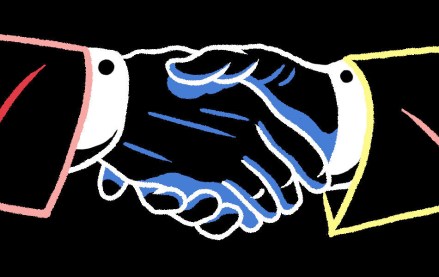Save 50% on a 3-month Digiday+ membership. Ends Dec 5.
5 questions marketers have about Sora and the synthetic social era

AI video tools like OpenAI’s Sora are edging into mainstream culture while marketers watch — some intrigued, others concerned.
The promise of near-instant, realistic video may sound like a dream for cash-strapped, content hungry brands. However, marketers are increasingly nervous about risks such as copyright liability, brand safety and ethics, wanting answers before committing to public-facing AI-video produced ads, according to four creative agency and marketing execs.
The number of AI video apps on the market is growing. In addition to Sora, there’s a list that includes Midjourney, Google Veo and Meta Vibes. Meanwhile, marketers are grappling with the synthetic social and video surge.
1. Are AI video apps safe for brands, both legally and ethically?
Safety — from brand safety and copyright to intellectual property and disinformation — are among the biggest unknowns. Particularly given the uncertainties stemming from the White House’s push to win the so-called AI race, and potential regulations.
Major Hollywood studios, including Disney, Universal and Warner Bros. Discovery, have filed pending lawsuits against Midjourney over copyright infringement and usage rights that could set a precedent for IP usage in AI.
“That was the first hurdle we hit with clients who were like, ‘I’m exposed. I’m not interested because you can’t indemnify me, and neither can the tool and the tool is just scraping everything’,” said Khari Streeter, chief creative officer at Burrell Communications Group, a collection of multicultural marketing communications agencies.
Clients worry about the black box nature of AI, unsure of what data sets and information video AI platforms are scraping to generate creative. Unless a company develops its own large language model, it can be hard to control the input data and ensure the generated information originates solely from designated sources, marketers said.
2. Will consumers reject synthetic AI content?
Marketers feel users have equal part trepidation and excitement around synthetic social. But early signs of pushback around human-like AI content (a lá Coca-Cola’s holiday campaign) have made marketers nervous.
“Some of the dialogue that we’re seeing online is, ‘Is this the end of truth?’ That feels scary,” said Natalie Silverstein, chief innovation officer at Collectively, Brandtech’s influencer company. There is still what some creatives call an “AI sheen,” as AI struggles to produce visuals without uncanny valley vibes. Even advanced AI-generated art, like that from Sora 2, still exhibits inconsistencies and a “too perfect” quality that people notice, hindering its use for final outputs, said John Geletka, founder and chief experience officer of creative and strategic agency Geletka+.
Noah Mallin, founder of Mallination, a marketing consultancy, said bluntly: “The thing about AI content is that the more of it people see, the less they want to see.”
3. What will synthetic video do to the economics of the creator economy?
The promise of AI video creation tools is the ability to crank out content faster and cheaper. But when it comes to the creator economy, marketers question the economics around licensing things like likeness, voices or personalities. Publishers have already started to strike licensing deals with AI platforms, allowing AI companies to use publisher content for a fee. Influencers are likely to strike similar deals as AI video generation continues, per Silverstein.
“We’re starting to see the potential for licensing of likeness. That’s probably coming,” said Silverstein, adding that most brands haven’t. Theoretically, she said, creators could negotiate line items for AI rights in brand deals, bringing up questions around protection, usage rights and compensation in the long-term.
At least one creator, Joy Ofodu, a full-time creator and voice actor, told Digiday last year that she has started including an AI-related rider for speaking engagements, asking that clients not train, adapt or modify her voice on any kind of AI system.
4. Are the tools producing quality, consumer-facing campaigns?
AI video applications like Sora have blurred the lines between AI and reality. But marketers say most video generation tools still need human hands on keyboards to produce high-quality images. In one example, Geletka said it took 58 cuts using an AI-powered video generation tool to produce four seconds of usable video.
“A lot of people don’t realize how much work it takes,” Geletka said, adding, “Even if your prompts are good, you’ve really got to push the machine.”
More AI-generated content could create a sea of sameness where AI-produced videos become indistinguishable from one another — a hard sell for brands looking to stand out in an increasingly crowded digital marketplace.
“The tools just aren’t doing what they’re supposed to be doing from a creative standpoint,” Mallin said.
5. Will AI slop ruin the social feed?
The phrase “AI slop” has cropped up more and more as AI video tools become increasingly democratized. Marketers point to “AI slop” as another source of concern, worried shoppers will be turned off if the platforms get overrun with synthetic content.
“The thing about AI content is that the more of it people see, the less they want to see,” Mallin said.
As tech platforms like OpenAI and Meta continue to push a synthetic social feed, consumer backlash and fatigue may outweigh tech ambitions.
Most marketers interviewed for this story are using AI tools internally until they get clearer answers on creative control, IP and user perception.
Streeter said, “We just haven’t quite caught up to [AI’s full capabilities in consumer-facing work] — a little bit because of the headwinds we’re talking about in terms of accountability and energy and all these other pieces. But I’m optimistic.”
More in Marketing

Future of Marketing Briefing: The tells and flops that will define Omnicom-IPG mega holdco
The real story will sit in how this newly fused entity behaves — whether it breaks from the patterns that defined both parents or simply scales them.

In Graphic Detail: CMOs at a crossroads of power and proof
CMOs are closing out another year defined by churn and shifting ground.

As Black Friday nears, fake apologies from brands are all over Instagram
Brands have taken to social media in advance of Bliack Friday to ask followers for forgiveness. The catch: They’re apologizing for their products being too good.







